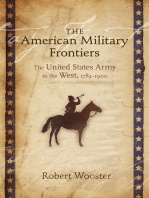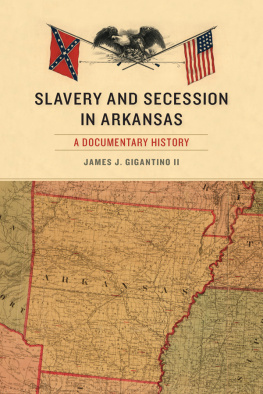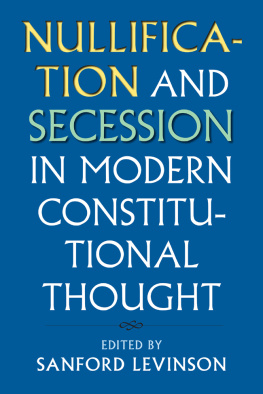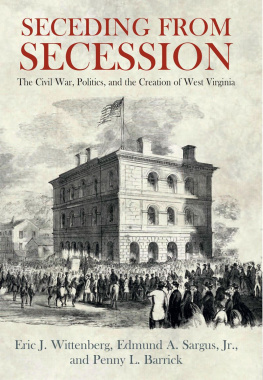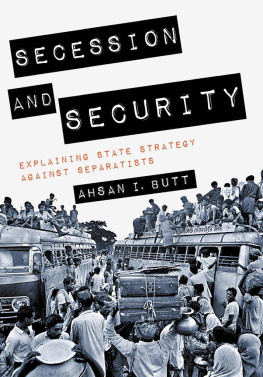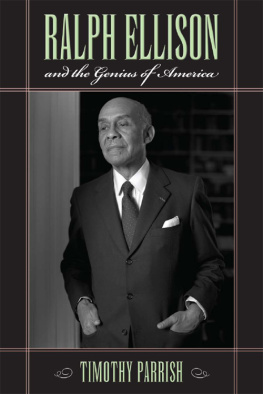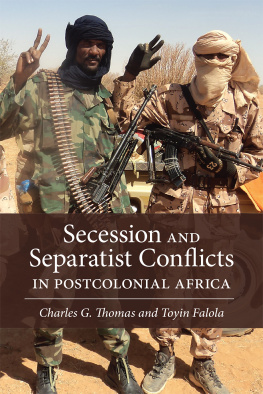Barakaldo Books 2020, all rights reserved. No part of this publication may be reproduced, stored in a retrieval system or transmitted by any means, electrical, mechanical or otherwise without the written permission of the copyright holder.
Publishers Note
Although in most cases we have retained the Authors original spelling and grammar to authentically reproduce the work of the Author and the original intent of such material, some additional notes and clarifications have been added for the modern readers benefit.
We have also made every effort to include all maps and illustrations of the original edition the limitations of formatting do not allow of including larger maps, we will upload as many of these maps as possible.
The Secession Conventions of the South
BY
RALPH A. WOOSTER
ACKNOWLEDGMENTS
THE debt owed to various individuals for their aid and encouragement in the preparation of this work cannot be adequately expressed. To Professor Barnes F. Lathrop of the University of Texas, in whose seminar the idea for this study was conceived and who has guided my work from beginning to conclusion, I owe a debt for advice and counsel that cannot be repaid. As those who have been fortunate enough to study under him are well aware, his demands are exacting and his standards are high, but the rewards in intellectual stimulation far exceed what small efforts we have made. Whatever contribution to the understanding of the secession movement may come from my work is due largely to him.
My particular thanks are extended to Miss R. Miriam Brokaw, Managing Editor of the Princeton University Press; it was Miss Brokaw who first encouraged me to extend my study of the lower South to include all of the fifteen slaveholding states. Over the past two and one half years she has provided invaluable assistance as I have worked to complete my task. To Professor David Donald of Princeton University I owe a debt not only for encouragement but also for several suggestions in regard to methodology. And to Professor Ernest C. Shearer, formerly of the University of Houston and now of Sul Ross State College, I wish to express my appreciation for the trust and inspiration that encouraged me to pursue graduate work in history.
Appreciation is extended to various librarians and their staffs, especially to Dr. Llerena Friend of the Texas Collection of the Library of the University of Texas, to Miss Julia Plummer, Head Librarian of Lamar State College, and to Miss Maxine Johnston, Research Librarian of Lamar State College, for the many, many courtesies that were furnished to me over a period of several years.
Several students have provided valuable assistance and have helped in various ways to make my task a more pleasant one. Gail Stevenson Michaels, my secretary for the past two years, served with such efficiency that I was relieved from numerous time-consuming clerical duties; Carol Ann Stevens gave assistance in researching the microfilm returns for the state of Maryland; and Linda Elizabeth Malin helped in the final stages of proofreading and rechecking statistical tables. My particular thanks and appreciation are extended to Mary Allbritton for her aid in researching, copyreading, and compiling statistical and bibliographical materials.
The editors of the Journal of Southern History, Southwestern Historical Quarterly, Arkansas Historical Quarterly, Journal of Mississippi History, Alabama Review, Florida Historical Quarterly, Georgia Historical Quarterly, Maryland Historical Magazine, and the South Carolina Historical Magazine have been kind enough to permit me to use portions of my articles that have appeared previously in their journals.
The author received generous financial support from the Lamar Tech Research Fund and the Penrose Fund of the American Philosophical Society. Without assistance from these funds my work could not have been completed, and I am extremely appreciative to the administrators of these funds for their faith and confidence in my work.
Finally, I wish to express my gratitude to my family for their patience and understanding in this long journey. Not only has my wife, Edna Jones Wooster, provided invaluable assistance in the actual preparation of the manuscript itself, but more important, she furnished the encouragement and inspiration which sustained me throughout my work. And for little Robert, who has cheerfully given up playtime with his parents for a cause he is too young yet to understand, I express my love.
Ralph A. Wooster
September 3, 1961
Beaumont, Texas
THE SECESSION CONVENTIONS OF THE SOUTH
1 INTRODUCTION
FOLLOWING Lincolns election as President of the United States in November 1860, the states of the lower South began leaving the Union. By early February 1861, seven states had seceded and had formed a new nation, the Confederate States of America. During the spring and early summer of 1861 the four states of the upper South withdrew from the Union and joined their sister states of the lower South in the Confederacy. The four slave states along the great border between North and SouthMissouri, Kentucky, Maryland, and Delawarewere torn in their loyalties but remained in the Union; in all of them, however, there were strong elements which favored and worked through the legislature for secession. Thus, all of the fifteen slave states in some way considered the matter of secession in the winter and spring months of 1860-61. In eleven of these states a special convention was called by the legislature specifically for the purpose of considering what action the state should take in the sectional crisis. Ten of these conventions adopted ordinances of secession, while the eleventh, that of Missouri, adhered to the Union and rejected secession. In each of the other four states the legislature did not call a convention but did itself consider at length what course the state should follow; three of them opposed secession but the fourth, Tennessee, adopted an ordinance of secession.
Seldom in American history have representative bodies played roles of equal importance to these eleven conventions and four legislatures. Composed in many instances of the very elite of southern society, these gatherings assumed and wielded tremendous power. Not only did they in many instances destroy allegiance to the old government and create allegiance to a new, but they also performed such other functions as amending the existing state constitutions and preparing for the military defense of the states. In one case, that of Texas, the convention removed the state governor for failure to support the Confederacy; in another, that of Missouri, the convention removed the governor for failure to support the Union. In all states they determined the course to be followed for the next four years of sectional conflict. It is the purpose of this study to examine the work of each of these conventionsin the case of Tennessee, Maryland, Kentucky, and Delawarelegislatures, and especially to analyze the characteristics of the delegates thereto in terms of such key data as birthplace, occupation, property ownership, and slaveholding.




